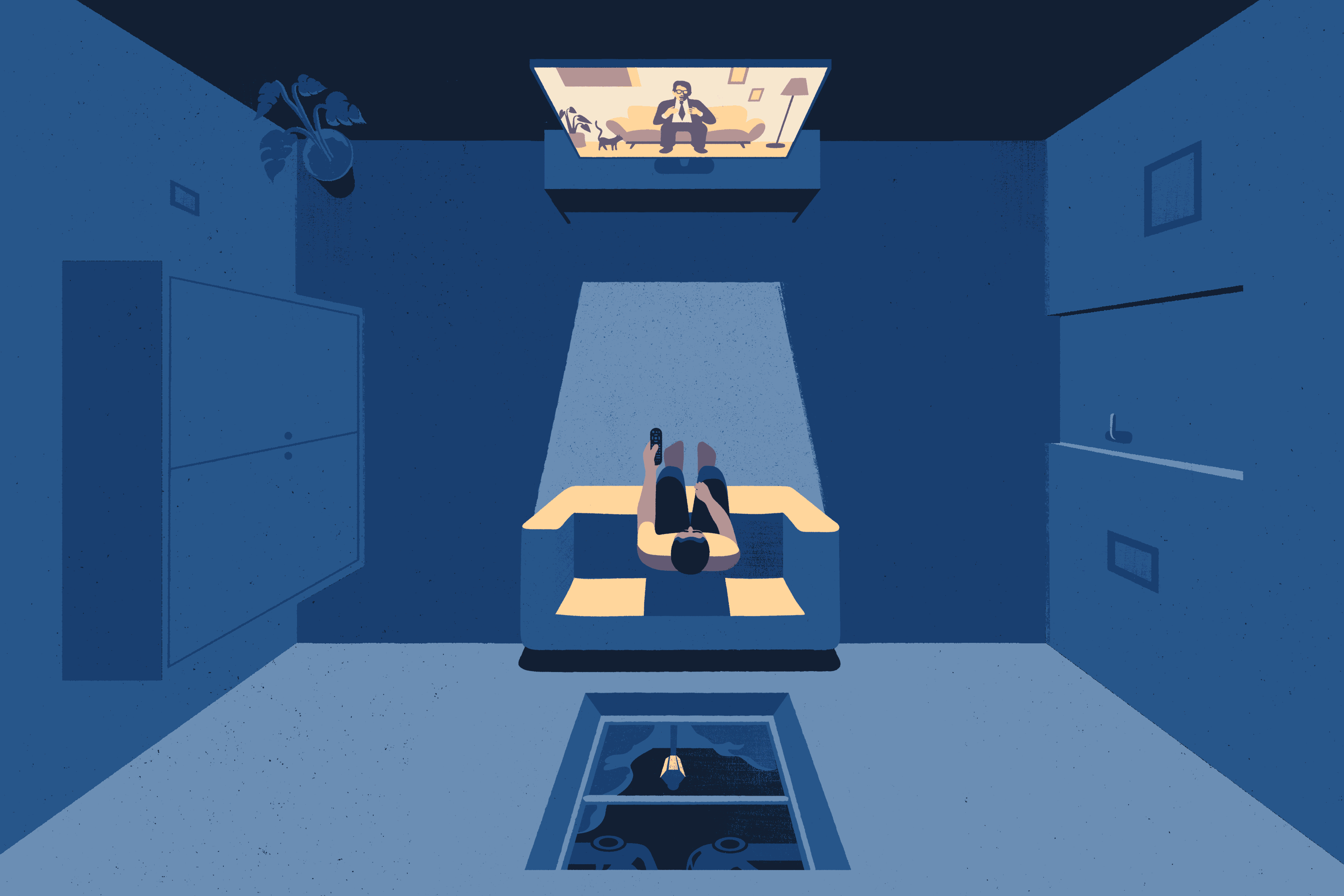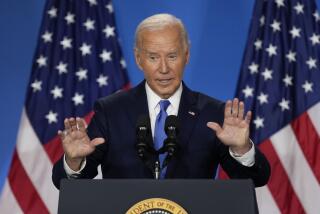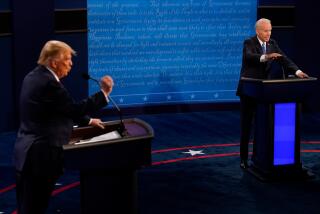Coronavirus changed the media landscape overnight. Welcome to the new normal
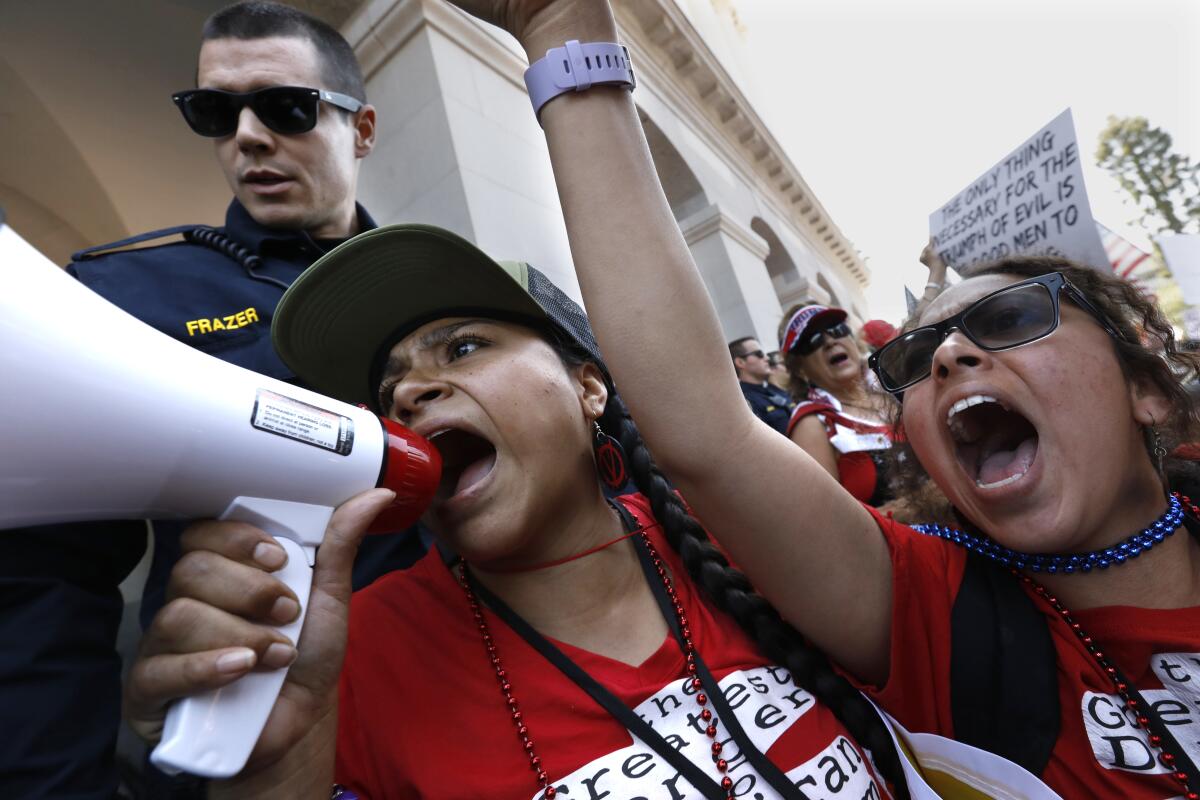
- Share via
“Am I on?” asked Joe Biden, searching for a cue from someone off-camera during his first official campaign rally as the presumptive Democratic nominee for president. Equipped with sunglasses, a smile and decades’ worth of experience pressing the flesh, kissing babies and glad-handing potential voters on the campaign trail, he addressed the people of Florida last Thursday from his home in Delaware.
His pixelated, glitchy and audio-compromised pitch for the White House marked what may turn out to be the first totally digital general election run for the White House. It was quite a feat — and debacle — for the analog-era Biden.
“Good evening, Tampa! Thanks so much for tuning in,” he said. “I wish we could have done this together, and it had gone a little more smoothly.”
No one ever said running for office during a pandemic — or doing anything else for that matter — would be easy. The media landscape has changed overnight, largely thanks to social distancing. National anchors are broadcasting from spare sets while local TV news journalists such as CBS Los Angeles’ Tina Patel shout their reports from behind face masks and conduct on-the-street interviews via mics mounted on an extension pole.
A mode of communication designed to get us to stay home, often skewered as the “boob tube” or “idiot box,” TV kept its lights on as others flickered out.
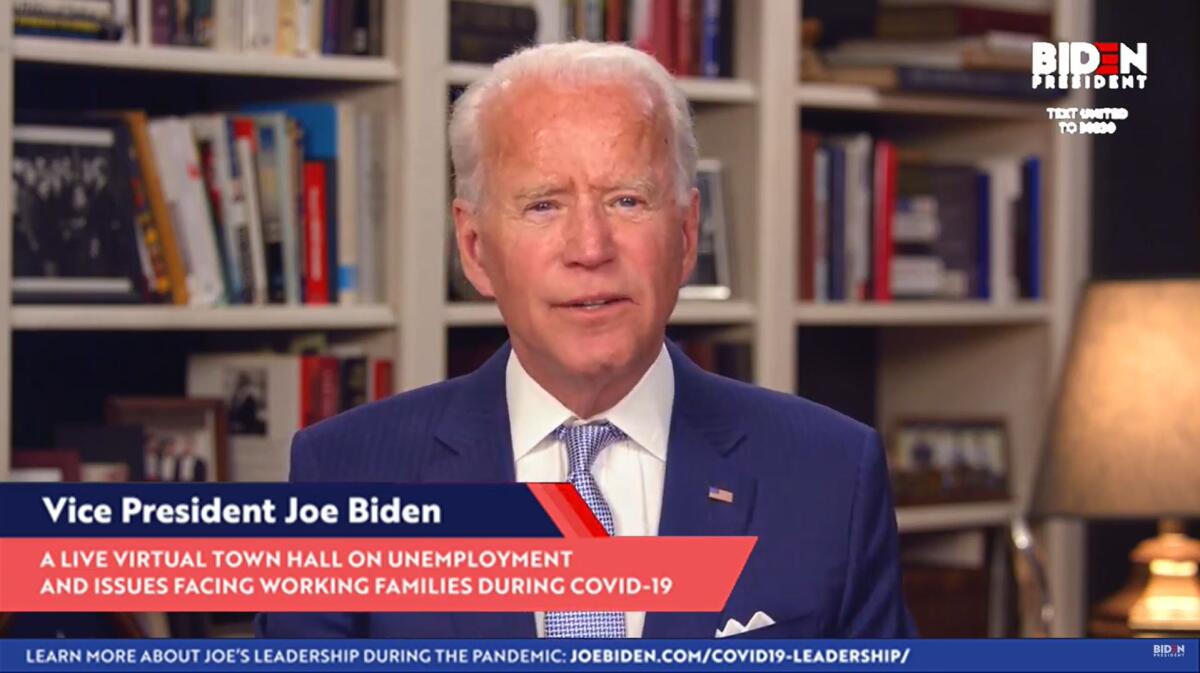
As for politics, the fight against a common enemy virus should have united our divided nation, but no. Partisan divisions are now disrupting any sort of uniform response to the disease. Stay home and stay safe versus open up now. Saving lives versus saving the economy. Medical science versus baseless trutherism.
Questions about the future are plentiful while answers are scarce. But when it comes to what we see on TV, there’s no need to predict the post-COVID future of politics or the media, because it’s already here. Scripted TV and films are, of course, another matter. It may take months if not years for them to catch up to the stranger-than-fiction realities of 2020.
Like a creepy sci-fi movie, almost everyone discussing COVID on air right now is quite literally a disembodied head, beaming in from somewhere beyond while near-empty news studios, unused convention venues and congressional chambers barely populated with masked political leaders look like dusty remnants of society consumed by zombie invasion.
Armed mobs infiltrating state capitols appear on our screens, on-scene reports of low meat supplies abound and our expert advice ping-pongs between doctors who tell us not to expect a COVID-19 vaccine anytime soon and a president who suggests mainlining bleach as a cure while pushing to open up the country despite growing infection rates and death tallies. And why are there still ridiculously long lines outside Trader Joe’s when Vons down the street is wide open?
The drastic changes of the past two months have played out in real time on screen, no matter the viewing device.
A Judd Apatow comedy couldn’t have better captured the hypocrisy of Fox News anchors advocating to Reopen America while broadcasting their message of resistance from the safety of their own living rooms. Their employer ordered a work-from-home directive that was recently extended through June 15. But the rest of you, get out there and demand a manicure!
Even oral arguments before the U.S. Supreme Court lost a sense of decorum in the era of social distancing when a flushing toilet could be heard during a recent session conducted via video conferencing. Forget the blindfold. Justice needs a mute button.
The director of the National Institute of Allergy and Infectious Diseases, Anthony Fauci, squared off with Sen. Rand Paul (R-Ky.) during a social-distanced Senate committee hearing Tuesday that looked more like a YouTube beef than a governance mechanism. Paul, in full quarantine beard, spoke from eerie, near-empty chambers to argue that American children should attend school in the fall and attacked Fauci for urging caution: “I don’t think you’re the end-all. I don’t think you’re the one person who gets to make a decision.”
Fauci answered via his office cam, seated at a messy desk, near piles of books on the floor and house plants in desperate need of trimming. (The man is busy!) He told Paul that he’d never claimed to be the “end-all” or only voice on the disease and doesn’t give advice about anything other than public health. “I think we better be careful ... in thinking that children are completely immune to the deleterious effects.” The plants looked on.
The kerfuffle was civilized compared to the actions of irate anti-maskers caught on camera attacking store clerks, a park ranger and in one case shooting and killing a security guard for trying to enforce mask and social-distancing guidelines.
Will there be a return to normal? Or is this is the new normal? You know there’s no one alive who can answer that question honestly. And since Trump’s election has anything been normal?
But what we’re watching on COVID-era TV and across all platforms is not entirely foreign. It’s simply exacerbated the destructive pattern of modern, divide-and-conquer politics and, in better news, forced the visual-prioritizing media to strip down the makeup, sets and knee-jerk responses in favor of more stripped-down reporting. Opinionated hosts, however, continue to spread misinformation no matter the consequences beyond high ratings.
NPR reported about an April study that analyzed the effects of coronavirus media coverage through two popular Fox News cable programs. “Hannity” and “Tucker Carlson Tonight.” Researchers at the Becker Friedman Institute for Economics at University of Chicago found there were more COVID-19 cases among viewers of Sean Hannity, the host who downplayed the pandemic, than those of Carlson, who began warning viewers about the virus in early February.
What is it like for homebound writers and host to make late-night comedy in the time of coronavirus? ‘Not normal,’ says Seth Meyers.
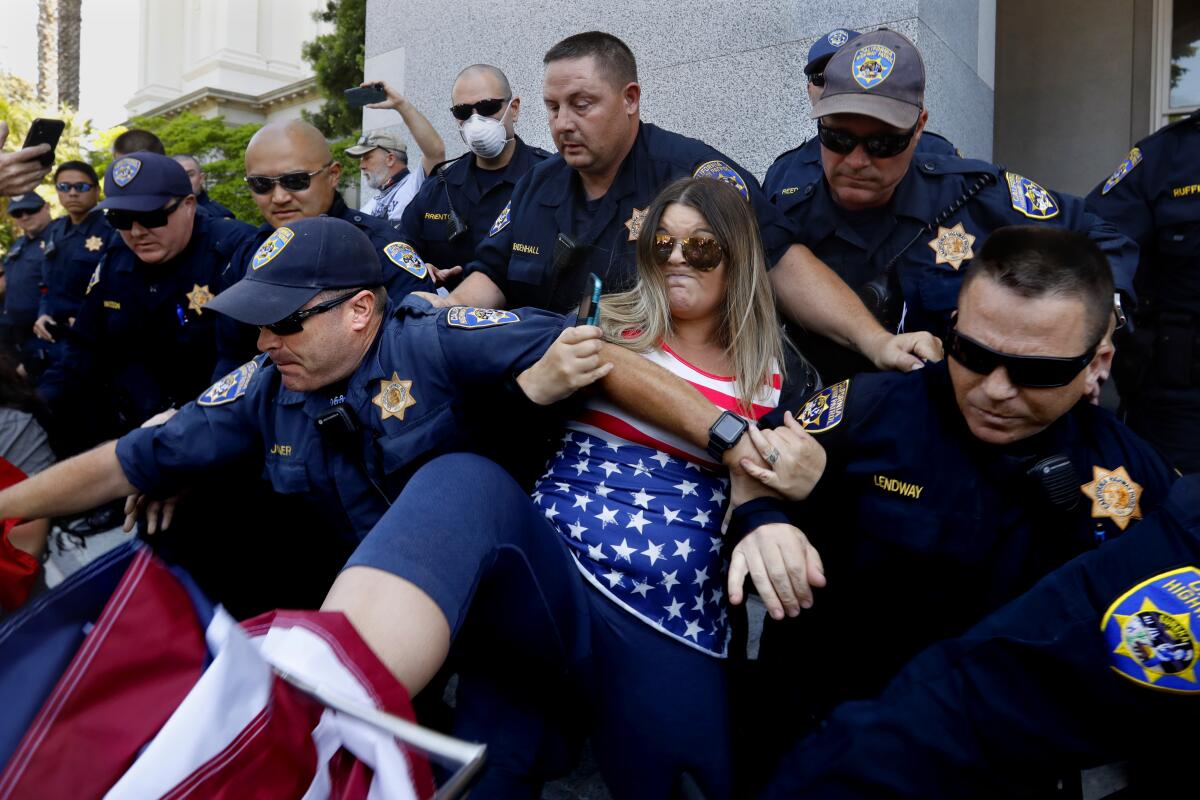
The coronavirus is already playing a key role in the forthcoming election. Biden’s campaign is weaponizing Trump’s failures to lead during the crisis in a recent ad released digitally in battleground states. “Donald Trump doesn’t understand. We have an economic crisis because we have a public health crisis. And we have a public health crisis because he refused to act,” a narrator says in the ad, which is running on Facebook, Instagram and YouTube. “Donald Trump didn’t build a great economy. His failure to lead destroyed one.”
It’s ironic that Biden represents the future, or rather the here-and-now, of virtual campaigning. “I’m used to being in a television studio, or out standing before a couple thousand people talking, and here I am in my basement,” he said during a digital town hall. “I’m trying to learn too.”
He’ll get better at Zooming, Skyping and staging his rumpus room to look, well, more electable. At least he knows not to place the his laptop camera on a low table, filming up his nose. It’s mystifying why guests and correspondents still make the fatal error after months of news interviews that look like “Blair Witch Project” parodies.
How will COVID-19 change media and political theater? You’re looking at it, plain as the nose on your TV screen.
More to Read
The complete guide to home viewing
Get Screen Gab for everything about the TV shows and streaming movies everyone’s talking about.
You may occasionally receive promotional content from the Los Angeles Times.
